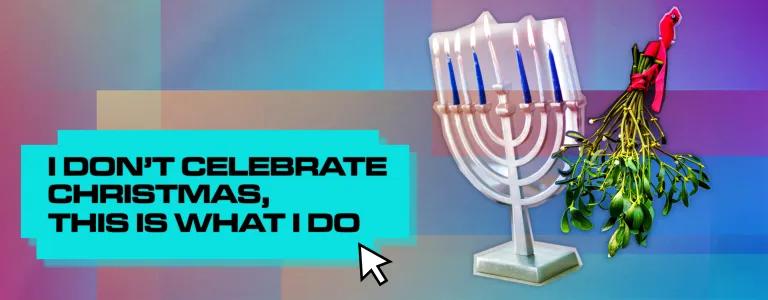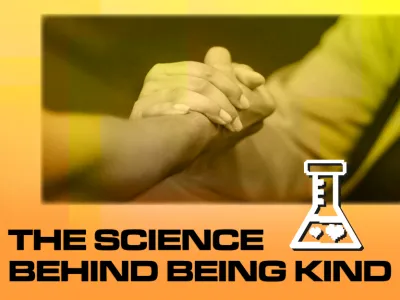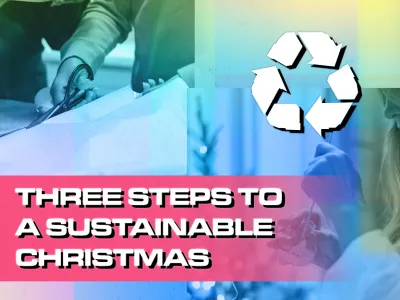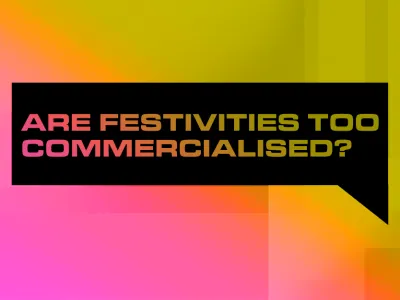
I Don’t Celebrate Christmas, This Is What I Do
Include this article in your Skills Builder Journal. It could help you develop...![]()

Winter is fast approaching; the air is crisp, winds are swirling round autumn leaves, and your much awaited festive drinks are being enjoyed inside your favourite cafe. Luminous lights glimmer down every path and street, engulfing houses with decoration and warmth during the earlier dark hours we so long to experience. Christmas tunes begin to murmur in every shop and corner, and there is an energised, bright bustle within every high street in town. Laughter seems to be more colourful, especially after sliding chaotically on slippery ice rinks, wearing every layer, glove and scarf you could find hibernating all year in the back of your wardrobe. You hear conversations about how early it is to be playing Christmas songs, and a cultural, complaintive chatter about how freezing the weather has become. There is a new sense of hope, comfort, and magic in the world, almost like a collective wish for snow to appear in the most unexpected of circumstances - finally giving us the rare miracle of a ‘White Christmas’ which we all hope to experience, especially in London.

I may not celebrate Christmas myself, - as a Pagan I celebrate Yule (aka the winter solstice), and being half-Israeli and Jewish I also celebrate Hanukkah with my family - however, I do thrive in the months before and during Christmas time, especially being winter-born myself. I forget every year how there are a special couple of weeks during winter where I feel like everything is in my favour. I am able to tap into my own energy easier and I feel awakened, refreshed, and full of spirits. My creativity is intense, and I feel much more connected to my friends and family when everything around me is cosy and celebrated. The atmosphere that we cultivate during Christmas creates one of the most beautiful feelings I have ever experienced, and I definitely look forward to it every single year. I also feel excited during this period because it is a time where I can tell others about Christian Christmas traditions which stem from Yule traditions, and enlighten others on the connections between the things we all do to celebrate.
The miracle of Hanukkah
Hanukkah, also known as the Festival of Lights, is an eight-day Jewish celebration commemorating the rededication of the Second Temple in Jerusalem in the 2nd century B.C., after an army of Jews known as the Maccabees had driven the Syrians out of Jerusalem and regained control of the temple with the help of a priest and Jewish Guerrilla leader named Judah Maccabee. He took lead after the death of his priest father, Mattathias, who started a rebellion against Antiochus IV Epiphanes, who outlawed the Jewish religion under his Seleucid Greek empirical reign and commanded the Jews to worship Greek Gods, one of which was Zeus. This led to Antiochus’s soldiers desecrating the Second Temple and installing an altar in its place to worship Zeus and sacrifice pigs to him from inside its walls.
The ‘miracle’ of Hanukkah, recounted in the Talmud, supposedly takes place after the temple’s reclamation, where the minuscule supply of oil left to light the menorah - one of the temple’s most important ritual objects of a branched candelabrum also known as a Hanukkiah - somehow kept its flame burning for eight days, even though there was only enough oil left for one. This legend provides the basis for the eight-day celebration of Hanukkah we practice today.
To celebrate Hanukkah over the festival’s eight days, the menorah is lit - one candle each day is added onto it after sundown until the last day of Hanukkah, where the entire menorah is aflame. The menorah consists of nine branches to place the candles in; the middle one is dedicated to the ninth candle called the shamash, (or ‘helper’ in English) which is used to light the other candles on the menorah with its flame. During this ritual we recite/sing blessings in Hebrew, and the menorah is usually placed on a mantlepiece or by a window to share the meaning of the holiday with others who may pass by it. We also eat traditional Hanukkah foods such as Latkes, which are fried potato cakes which taste like hash browns, and jam-filled donuts, otherwise known as ‘sufganiot’ in Hebrew.
We also play some traditional games during Hanukkah using four-sided spinning tops known as dreidels (‘sevivon’ in Hebrew), which have the letters נ (nun), ג (gimel), ה (hei), ש (shin) on the top of each side. It is said that the four letters represent the Hebrew phrase, “נֵס גָּדוֹל הָיָה שָׁם (nes gadól hayá sham, "a great miracle happened there"), and also a Yiddish mnemonic for the rules of a gambling game (which we play using chocolate coins). Nun- stands for ‘nisht’ meaning ‘nothing’, Gimel- stands for ‘gants’ meaning ‘entire/whole’, Hei- stands for ‘halb’, meaning ‘half’, and Shin- stands for ‘shtel arayn’, meaning ‘put in’. In the gambling game each player starts out with an equal number of coins - with the rest in a pile in the middle of the table - and after spinning the dreidel you play out the outcome depending on which letter lands on the southern side. You either get no coins, get all of the coins which are in the pile, get half of the coins, or you have to put one coin into the pile. If a player takes all, each player then has to add a coin into the middle to create the pile again. The player with the most coins at the end of the game wins!
Yuletide and Christian traditions
Yule or Yuletide, otherwise known as the midwinter solstice celebration, commemorates the shortest day and longest night of the year, usually around 21st December. Its origins derive from Scandinavia, and also celebrates the return of the sun as the days begin to get longer after solstice night. The festivities last for 12 days, starting on solstice eve, and have been seen as the origin for the Christian Twelve days of Christmas. It was believed that the sun stood still for these twelve days, so the Druids brought upon the tradition of lighting a yule log to represent conquering the winter darkness, banishing unwanted spirits and inviting prosperity and good fortune into the new year. It is tradition in Scandinavia to leave traditional food such as porridge for household spirits or elves, and this led to the tradition we have today of leaving cookies and milk out for Father Christmas, who is otherwise known as ‘the Yule Elf’ (Jul Tomte) in Sweden.
The Druids would give mistletoe to others as blessings. In modern day we hang the mistletoe inside our homes; it was a Roman tradition for a man to kiss a lady under the mistletoe and take off one of the berries. Once all the berries are gone nobody else is to kiss under the mistletoe. It is then taken and burnt on the twelfth night to manifest the marriage of those who kissed each other. The mistletoe represents multiple magickal aspects that us pagans celebrate and use during this time of year. Kissing under the mistletoe represents everlasting happiness and hanging it in the home symbolises protection from disease and attracts love and luck.

Some ways we celebrate Yule include going on a walk during the solstice to embrace nature and the connectedness to the earth around us, foraging a Yule log, lighting a solstice bonfire, feeding wild animals by leaving offerings for birds and woodland creatures, telling myths and legends around a fire with family, having a solstice feast, creating a Yule altar and a circle of candles, practicing gratitude and writing your gratitudes down and hanging them on your Yule tree or burning them in a fire, making Yule wreaths, burning the Yule log, decorating the Yule tree, honouring people you have lost and giving thanks to the light that will inevitably follow into the following year, and most importantly, singing Yule songs and dancing!
There is so much more to learn about Hanukkah and Yule, so make sure to continue your research if this has peaked your interest! Thank you for reading and taking the time to learn more about different cultures and traditions. Until next time!




